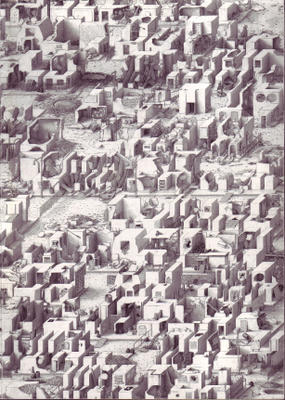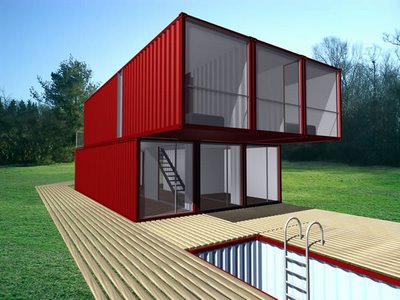 Back in July, LOT-EK announced their Container Home Kit, a prefab, do-it-yourself assembly unit that “combines multiple shipping containers to build modern, intelligent and affordable homes. 40-foot-long (13.00m) shipping containers are joined and stacked to create configurations that vary in size approximately from 1,000 to 3,000 square feet (90m2 to 270m2).”
Back in July, LOT-EK announced their Container Home Kit, a prefab, do-it-yourself assembly unit that “combines multiple shipping containers to build modern, intelligent and affordable homes. 40-foot-long (13.00m) shipping containers are joined and stacked to create configurations that vary in size approximately from 1,000 to 3,000 square feet (90m2 to 270m2).”
Watch the video.
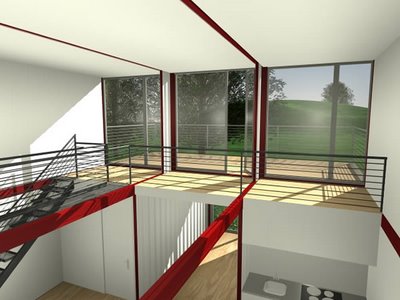 “Each container is transformed [by] cutting sections of its corrugated metal walls,” they explain. “Incrementing the amount of containers allows the house to expand from a 1 bedroom to a 2, 3, and 4 bedrooms home. The landscaping around the houses uses additional containers to configure a swimming pool, a pool house/tool shed and a car port. CHK™ houses can be disassembled and reassembled elsewhere.”
“Each container is transformed [by] cutting sections of its corrugated metal walls,” they explain. “Incrementing the amount of containers allows the house to expand from a 1 bedroom to a 2, 3, and 4 bedrooms home. The landscaping around the houses uses additional containers to configure a swimming pool, a pool house/tool shed and a car port. CHK™ houses can be disassembled and reassembled elsewhere.”
Here’s a poster-sized PDF to guide you through the options, including several dozen external colors:
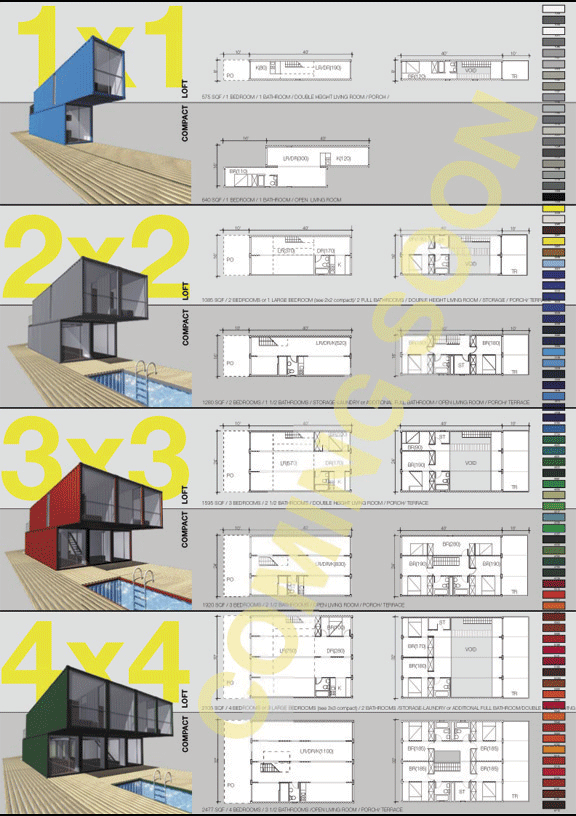 I want a bright yellow one that I’ll park somewhere in Los Angeles, serving as both BLDGBLOG’s new home office and as a space for public architectural lectures. Archinect, Pruned, Subtopia, and Inhabitat will open up similar containers next door; then Edgar Gonzalez, gravestmor, and The Dirt will move in. Soon, a color-coded microcity of container high-rises, run entirely by architecture and design bloggers, will appear – a media complex for the 22nd century, covered in satellite dishes, winning grants and producing documentaries – eventually awarded urban landmark status from the Californian government.
I want a bright yellow one that I’ll park somewhere in Los Angeles, serving as both BLDGBLOG’s new home office and as a space for public architectural lectures. Archinect, Pruned, Subtopia, and Inhabitat will open up similar containers next door; then Edgar Gonzalez, gravestmor, and The Dirt will move in. Soon, a color-coded microcity of container high-rises, run entirely by architecture and design bloggers, will appear – a media complex for the 22nd century, covered in satellite dishes, winning grants and producing documentaries – eventually awarded urban landmark status from the Californian government.
things magazine and The Kircher Society will set up shop. Ballardian. Abstract Dynamics. MoCo Loco. And so on.
We’ll serve too much wine, issue counterfeit passports, discuss seismology and the structural fate of the avant-garde – then design, in secret, an archipelago of hovercrafts the exact size and shape of Hawaii.
Then we’ll invade Hawaii.
(Elsewhere: Architect’s Newspaper and BusinessWeek. Earlier: LOT-EK’s library of airplanes).

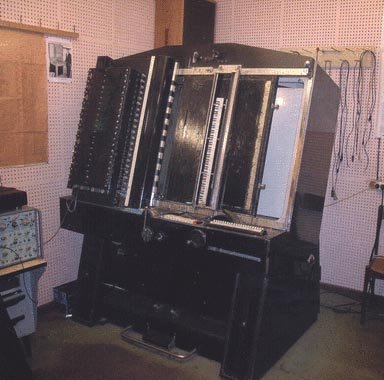 [Image: The
[Image: The  [Image: A representative
[Image: A representative  [Image:
[Image: 